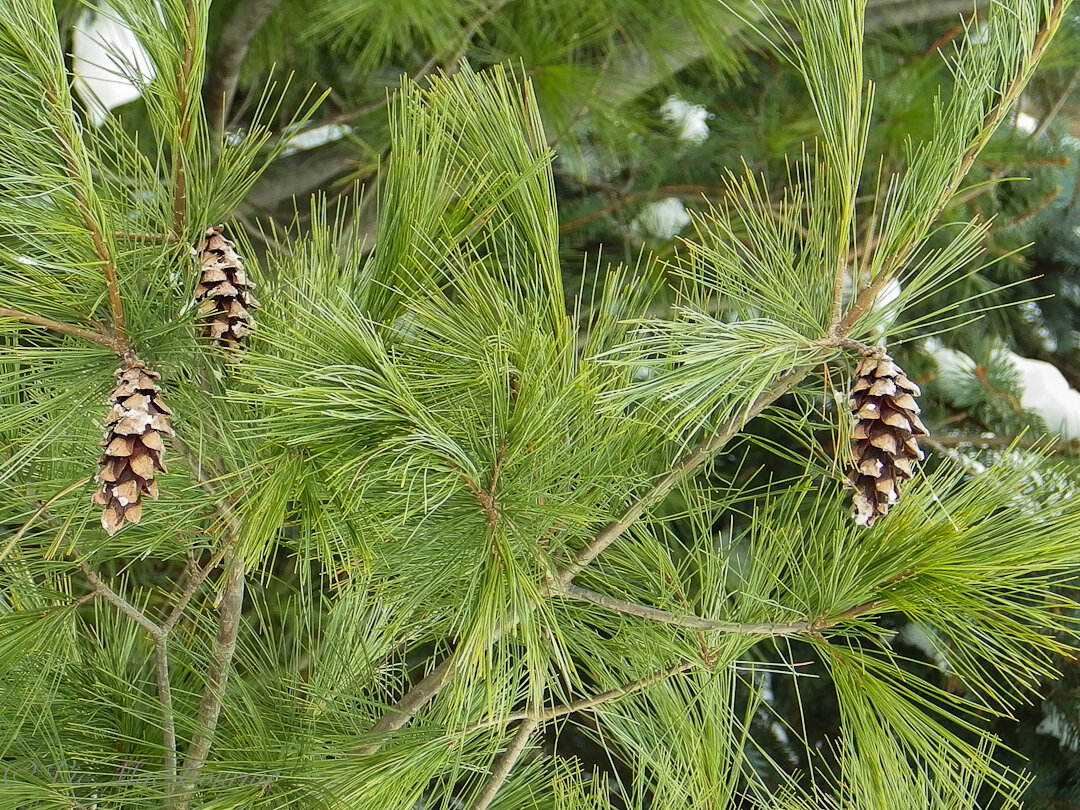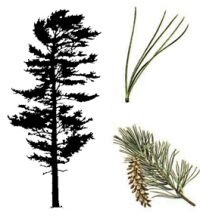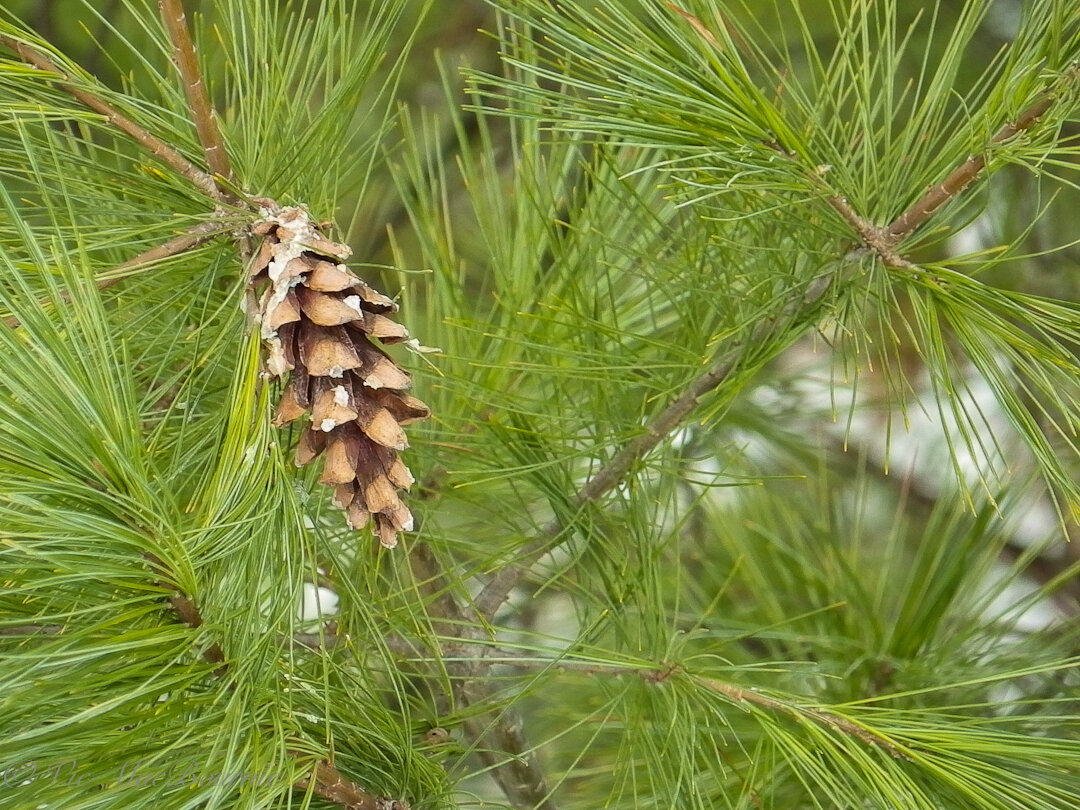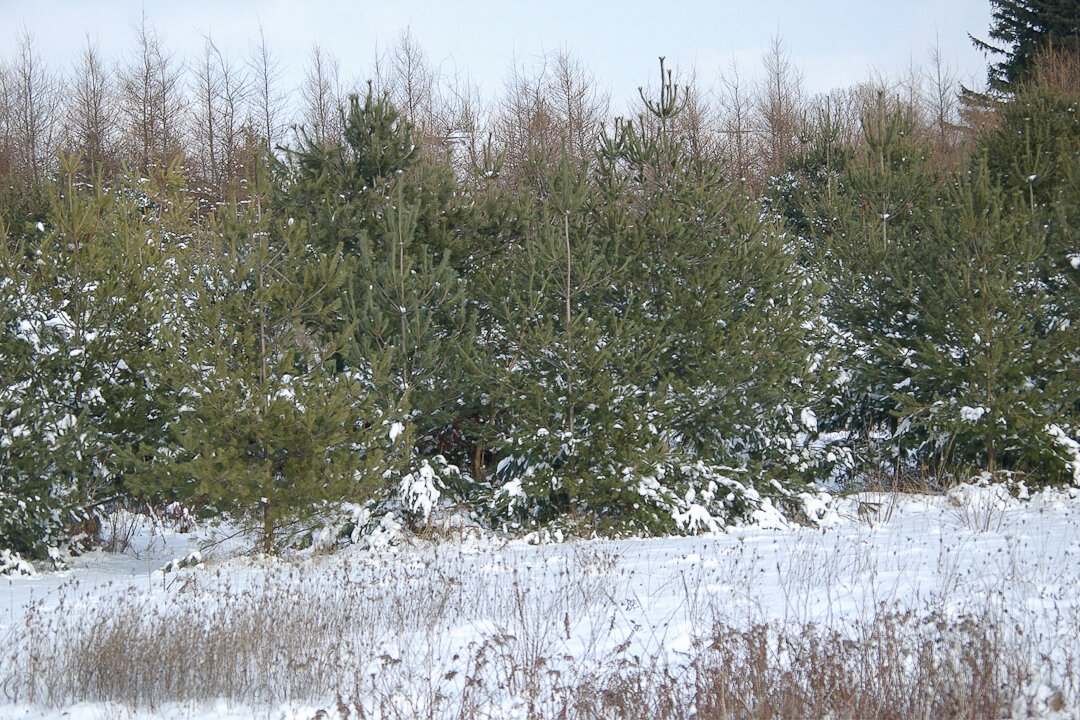White pine: Native evergreen that helps birds and wildlife
White pine is showstopper in Carolinian forest
The eastern white pine just might be the single greatest tree for the woodland and wildlife garden.
There, I said it. And I’ll stand by it too.
In fact, our native pine tree (Pinus Strobus) is not only beautiful in every stage of life, it also provides nesting habitat, food and shelter for numerous backyard birds. This alone would make it a standout on most lists, but add the fact it looks as good in spring, summer and fall as it does in the coldest of winters, when neighbouring trees are stripped of their leaves, and you’ve got yourself a real winner.
The Eastern White Pine is the only pine species that is native to the Carolinian Zone of Southern Ontario.
(For more on the importance of growing native trees, plants and shrubs in our gardens, go to my article here.)
It grows in zones 2 to 7 making it the perfect addition to many Canadian and American woodland and wildlife gardens looking for a tree with four-season interest. In the forests of Eastern Canada, the white pine stands above the rest growing taller than any other tree.
It’s too bad not enough gardeners celebrate our native pine and Ontario’s Provincial tree enough to plant it every chance they get.
How close should White Pine be spaced apart?
I’m a firm believer that too many plant nurseries and even experts recommend planting trees and shrubs too far apart in order to give them room to grow. That’s fine if you want to treat the tree or plant as a specimen, but if you are looking for a more full or dense planting closer to a more natural look, ignore these recommendations and plant a little closer.
White Pine are recommended to be planted about 6-feet apart in all directions. That’s perfectly fine, but if you are looking to use them more as a hedge or screen, consider planting them maybe 4 feet apart knowing that they will be growing together in a few years.
The elegance of the Eastern White Pine is evident here with its feathery, blue-green needle clusters and pine cones.
Quick Fact: The University of Guelph Arboretum’s Century Pine Collection is made up of pines that were planted in 1907 and is likely the oldest pine plantation in Canada.
A trip to the local tree nursery often highlights a host of ornamental varieties of our native pine, but few, if any, species examples. (See a partial list of ornamental varieties at end of article)
I’m not sure why so many gardeners often choose a more dense-looking tree like the blue spruce rather than the open, airy feel of a young eastern white pine.
Gardeners may also hesitate to plant the fast-growing tree that typically grows 50 to 80 feet in cultivation, but will grow to between 100-150 feet tall in the wild, with the record holder coming in at 200 ft tall.
So it goes without saying that the white pine is best suited for landscapes with ample space. Don’t let that stop you from squeezing one into your backyard landscape. The size of the trees can be managed somewhat with regular pruning.
I remember my first real introduction to the white pine. I was aware of its elegant branches from my many hikes in local woods and travels to Northern Ontario where the tree often dominates the landscape. In those days, however, I was more concerned with getting photos of the wildlife than admiring the trees. If there was not a bear sitting in the branches, I was not really interested in it.
However, they certainly left an impression on me. To this day, the trees are a vivid reminder of many memorable moments spent wandering Algonquin Park in search of moose, deer, beaver and anything else that would present itself to my camera.
It’s not hard to understand why the Eastern White Pine is a favourite spot for large birds like owls, hawks and eagles to roost in during the day.
It wasn’t until I began to acquire an appreciation for plants, trees and natural landscaping that I really noticed the beauty of the eastern white pine.
A landscaper shared his love for the tree with me during a tour of some of his projects. I remember how he used several of the trees packed close to one another to form a feathery background for a small waterfalls and pond. The trees were pruned to thicken them up and perfectly screened a nearby wooden privacy fence.
The scene, in the middle of a typical, small suburban backyard, took me right back to my days of hiking in northern Ontario.
It also taught me that using large trees on small lots and pruning them to create the shape and size you are after can turn a basic backyard into a woodland retreat one would expect in the heart of northern Ontario or New York’s Adirondacks.
His pruning techniques showed me that there is also a simple solution to the rather open white pines that many gardeners shy away from purchasing. By simply nipping off a third of the candle growth in spring, before they open, the tree will thicken up over time and provide an elegant, blue-green coniferous tree that is equally at home as a specimen in your garden as it is being used in numbers to form a screen or hedge.
Get garden ready over winter
Three years with a bad hip made my ability to work in the garden extremely difficult. Following a hip replacement, I knew I had a lot of work to do to prepare myself for another garden season, and the best way to achieve that was to begin walking.
If you need to either get in shape for gardening or lose a few pounds, I highly recommend walking your way to health. Today, I walk 12,000 steps a day and I owe my new found health and ability to work in the garden to two devices – a Fitbit and Nordic Walking Poles.
The Fitbit allows you to track your increasing fitness levels, while the Nordic Walking Poles not only provide a full-body workout, but they also help you exercise longer while reducing stress on both your knees and hips.
A close-up of the tree’s pine cone.
Five White Pine facts
• The Eastern White Pine is a long-lived species that can live up to 200 years or more.
• The tallest tree has been recorded at 200 feet high, but most mature trees growing in the wild can reach 150 ft high and more than three feet in diameter.
• The trees have long been sough out as a traditional Christmas tree, prized for their conical shape and soft, feathery needles.
• Pine needle tea has a pleasant taste and smell and is rich in vitamin C (5 times the concentration of vitamin C found in lemons. Vitamin C is an immune system booster which means the tea can help battle illness and infections.
• Take a handful of pine needles and let them soak in boiling water on the stove. The aroma will add a nice pine smell in the house. Perfect for any time but especially around the Christmas season.
How important are the trees to wildlife?
Just how important is the white pine to our gardens and its wildlife? Doug Tallamy, chairman of the department of entomology and wildlife ecology at the University of Delaware, and author of Bringing Nature Home and The Living Landscape, considers the white pine one of the best native trees for providing food, nuts and insects for a host of wildlife.
His hypothesis for the gardener’s lack of enthusiasm toward the white pine is the tendency for the tree to lose its main leader to ice storms when grown in the open as a specimen. The result is a spreading flat-topped tree.
Anyone familiar with the Canadian Group of Seven artists, however, know full-well that it is this flat-topped look that inspired many of their greatest landscape paintings including A.J. Casson’s 1957 painting entitled “White Pine.” A perfect illustration of how the pines take on their elegant flat-topped look as they age. This link shows the painting.
Quick Fact: This tall and stately conifer was once a favourite for ship masts as well as furniture building.
“Every creature is better alive than dead, men and moose and pine trees, and he who understands it aright will rather preserve its life than destroy it.”
If grown in a sheltered forest setting with rich soils, the eastern white pine can become huge with large straight trunks. Although it often goes unnoticed in the woodland setting, a recent drive through the forest around our home revealed a stunning number of natural white pine in various stages on life.
It is the host plant for the Eastern Pine Elfin and used extensively by the imperial moth. The Pine Elfin is a rather drab brownish butterfly, which is found in most of the eastern U.S. and in Canada from the Atlantic provinces through Ontario, southern Manitoba, central Saskatchewan, and into Northern Alberta.
The imperial moth is one of the largest and most impressive in its range. Although more common in the southern United States it can be found as far north and the southern Great Lakes.
Pine needles in general are favourites of 203 species of moth and butterfly larvae.
The Audubon Society reports that seeds found within the pine cones are food for up to forty species of birds (including blue jays, brown thrashers, cardinals, chickadees, nuthatches, grosbeaks, juncos and woodpeckers) as well as red fox and gray squirrels, chipmunks, mice and voles. Expect to wait between 5-10 years for the brown cones (4-8 inches long) to be produced on the tree.
In fact, the seeds are an important food source for crossbills which will even migrate from Canada to the United States during some winters in search of white pine seeds.
Pines, including the white pine, are also home to sawfly caterpillars, a staple of many birds in early spring looking to feed their young.
Is there any doubt that you need a couple of these white pines for your backyard?
If so, consider that the soft, feathery foliage of the White Pine is an excellent source of nesting material. In fact, when setting up a bluebird box it is often recommended to use a handful of white pine needles in the boxes to attract a nesting pair.
The white pine offers refuge for birds during cold winds and snowstorms, as well as relief from extreme sun and heat during summer months.
Owls, hawks and eagles often perch in the trees to take advantage of the views the open branches of mature specimens provide. Eagles are known to prefer a mature, flat-topped pine for nesting.
Botanical Name: Pinus strobus
Common Names: Eastern white pine
Plant Type: Needled evergreen tree
Mature Size: 50 to 80 feet tall, 20- to 40-foot spread
Sun Exposure: Full sun to part shade
Soil Type: Medium-moisture, well-drained soil
Soil pH: 5.5 to 6.5 (acidic)
Hardiness Zones :2 to 7 (USDA)
Native To: Southeastern Canada, eastern U.S.
Mourning doves, purple finches and robins also use the open branches as favourite nesting sites.
Although the white pine is an excellent ornamental tree, it requires favourable growing conditions to thrive. Grow it in fertile, moist, slightly acidic, well-drained soil in full sun. They will tolerate some shade, but will not do well in hot, dry, infertile, compacted, alkaline or heavy clay soils.
What native plants grow beneath a white pine?
If you have ever looked under a white pine, you would be hard pressed not to notice the abundance of dried needles that form a thick mulch. The needles not only form a mulch, they also help to create a somewhat more acid environment under the tree. This together with a lack of water adds to the difficulty of growing plants under the pine.
Consider using these plants under your tree: Bearberry, Wild Ginger, Columbine, White Woodland Aster, Heart Leaved Aster, Wild Geranium, Woodland Sunflower, Mayapple, Jacob’s Ladder, Solomon’s Plume, Starry Solomon’s, Goldenrod and Bellwort.
Native ferns that can be used include: Maidenhair Fern, Lady Fern, Oak Fern and Royal Fern
Road salt and other elements that can harm white pines
Don’t plant your pine close to busy streets. They are susceptible to damage by road salt as well as air pollution and drying winds. The branches can suffer severe damage in ice storms and heavy snow.
If planted in less than ideal conditions, young and recently planted trees can suffer from white pine decline, characterized by a decline in needles until they have only small clusters of stunted needles at their branch ends. This is a signal to move the tree to more ideal locations in the garden.
Other problems include white pine root decline, blister rust disease (caused by gooseberry or wild currant bushes growing nearby), white pine weevil, European pine shoot beetle and European pine shoot moth.
Don’t let any of these potential problems stop you from planting this native.
Nothing, not even the white pine, is perfect.
The pine trees seen here are being used as a screen on this larger rural property to block the view of the house.
White Pine cultivars
Blue Shag – is a dwarf, dense, eastern white pine ideal for use in rock gardens, as a foundation planting or in a shrub border.
Fastigiata – is a small to medium-sized cultivar with a narrow, upright, columnar habit. Grows 30 to 40 feet tall, but only 10 feet wide. The tree’s shape broadens with age.
Hillside Winter Gold – is a fast growing upright, full-sized cultivar with an open, pyramidal habit. Typically grows 12 to 15 feet over the first ten years, eventually reaching 30 to 70 feet tall.
Horsford – a dwarf cultivar that has a dense, rounded growth pattern and grows slowly (3 inches per year) to form a miniature mound of foliage to 1 foot tall. Works well as an accent in the rock garden.
Macopin – is a broad upright, irregular, compact, shrubby form which grows at an intermediate rate (6 to 12 inches per year) to 3 feet tall by 3 feet wide (sometimes larger).
Pendula – is a semi-dwarf cultivar with weeping, trailing branches that may touch the ground. It typically grows to 6 to 15 feet tall with a larger spread.
Pinus strobus (Nana Group) – is used by many nurseries as a catchall term for describing a group of compact, shrubby, mounded, irregularly branched, spreading, dwarf forms of eastern white pine. These plants are very slow growing, often reaching only 2 feet tall after 10 years. They eventually mature to 3 feet tall by 4 feet wide, but less frequently may reach 4 to 7 feet in height and 6 to 10 feet in width. Silvery, blue/green needles are soft to the touch.
Loui – Boasts a golden-green colour years round and comes highly recommended from a reader.
More links to my articles on native plants
Why picking native wildflowers is wrong
Serviceberry the perfect native tree for the garden
The Mayapple: Native plant worth exploring
Three spring native wildflowers for the garden
A western source for native plants
Native plants source in Ontario
The Eastern columbine native plant for spring
Three native understory trees for Carolinian zone gardeners
Ecological gardening and native plants
Eastern White Pine is for the birds
Native viburnums are ideal to attract birds
The Carolinian Zone in Canada and the United States
Dogwoods for the woodland wildlife garden
As an affiliate marketer with Amazon or other marketing companies, I earn money from qualifying purchases.





